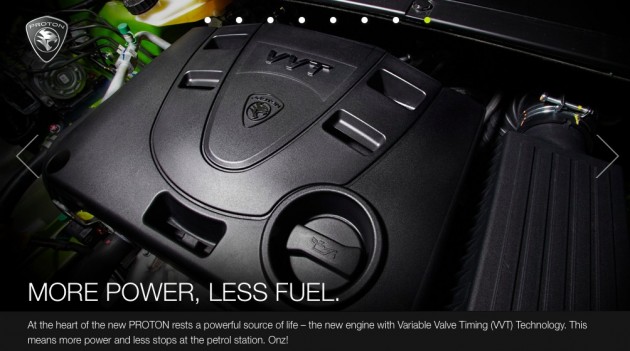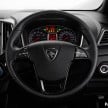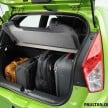Proton Compact Car coming out of your ears? Well… here’s more! The spiritual successor to the Proton Savvy will be powered by new four-cylinder VVT engines – a 1.3 litre unit producing 94 hp at 5,500 rpm and 120 Nm of torque just below 4,000 rpm, and a 1.6 litre unit developing 107 hp at 5,750 rpm and 150 Nm at 3,750 rpm.
Both engines will be mated to five-speed manual and CVT gearboxes. Each variant (1.3 Standard, 1.3 Executive, 1.6 Executive, 1.6 Premium) will have a choice of both gearboxes, making it eight variants in all.
We only have details on the bigger engine for now – claimed fuel consumption figures for the 1.6 litre are 6.6 (manual) and 7.4 (CVT) litres per 100 km on a combined NEDC cycle and 5.5 litres per 100 km at a constant 90 km/h. The VVT (variable valve timing, effectively supersedes the Campro CPS‘ two-stage cam profile switching) is only on the intake side.
Other features of the engines include a Smart Alternator and a maniverter (integrated exhaust manifold and catalytic converter).
The car also has a horizontally-mounted CVT cooler (Suprima S‘ CVT cooler is vertically-mounted). Suspension is handled by MacPherson struts up front and a torsion beam out back, and there’s electric power steering.
According to Proton chief technical officer Abdul Rashid Musa, the new platform on which the Proton Compact Car sits on has been designed to support hybrid and electric powertrains – something to expect for the future, then?
Over RM500 million and four years in development, the PCC is shaping up to be quite promising, eh?
AD: Drive the Proton model of your dreams. Submit your details and Proton PJ will get in touch with you.
Looking to sell your car? Sell it with Carro.






























AI-generated Summary ✨
Comments overall reflect cautious optimism about Proton's new Proton Compact Car (PCC), especially the 1.3 and 1.6 VVT engines and the platform's support for hybrid/electric powertrains. Some praise Proton’s efforts in matching Japanese and Korean cars, with mentions of improved design and engine performance. Others express skepticism about the developmental cost of RM500 million over four years, comparing it unfavorably to global spending on R&D, and comment on engine specifications being outdated or modest in power. There is discussion about fuel economy figures, with some doubts about their real-world applicability, and mixed opinions on the CVT transmission's performance. Many hope the new engine and platform signal Proton’s move forward, but some note that quality, safety, and design need further improvement.